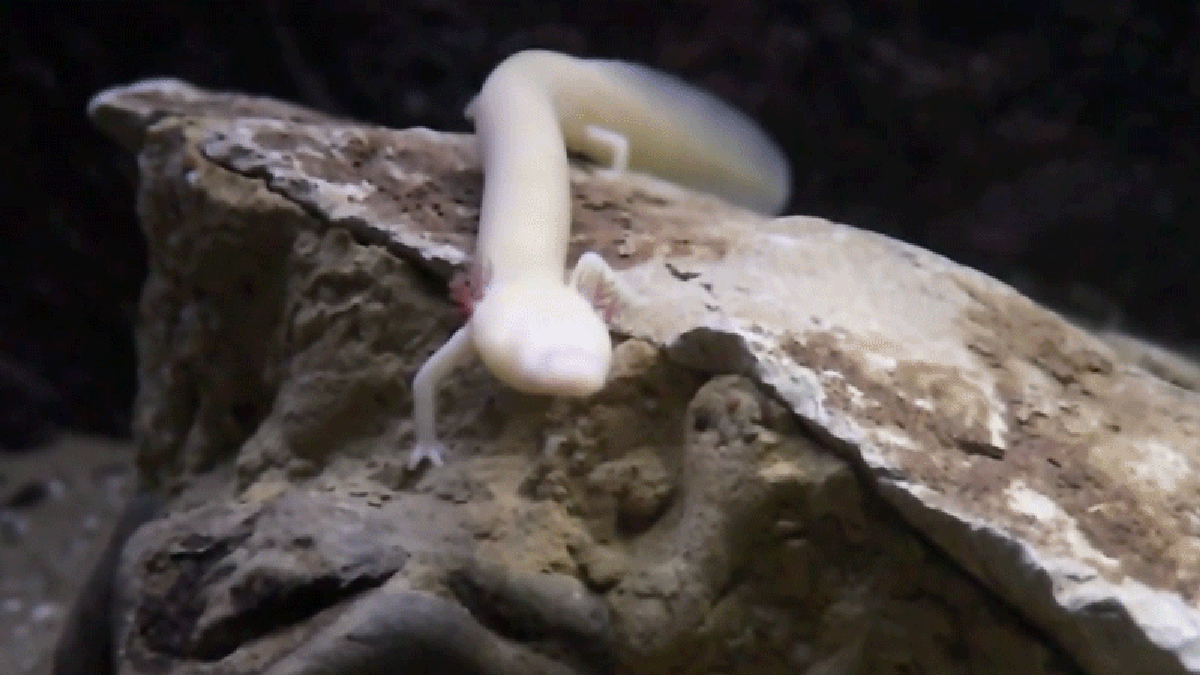Cave-dwelling creatures often bear the characteristics of animals unaccustomed to light. Their skin, or scales, are blanched, and their eyes range from “of little use” to purely ornamental. But that doesn’t stop the serpentine cave salamanders of southeastern Europe from sneaking up to the surface now and again.
How Isolation Plays a Role in Space Exploration
The odd-looking animal is an olm (P. anguinus), or proteus, an obscure salamander once thought to be the offspring of dragons. In research published last month in Ecology, a team of researchers described a surprising behavior of the amphibians: they sometimes leave the relative safety of their underwater caverns for the surface.
Found exclusively in a few cave systems in countries like Italy, Slovenia, Croatia, and Bosnia and Herzegovina, the pigment-less olm can live up to a century and sometimes are motionless for years at a time. Though their larvae have eyes, they become vestigial by the time the animals reach adulthood.
In 2022, a team of researchers CT-scanned the olm’s brain, revealing an internal structure that was odd even among salamanders. Its unique morphology is a result of troglomorphism, the process by which cave-dwelling animals evolve a specific set of features befitting their dark, dank environment.
The research team observed olms in 15 springs in eastern Italy during the daytime and nighttime; olms were more present in the springs at nighttime (28% of the observed time) than daytime (14% of the time). One spring contained olms 64% of the observed time.The researchers also handled 12 of the olms; 5 of out of the 12 puked up earthworms when picked up. The earthworms, notably, were species that live in soils on the surface, as opposed to earthworms that inhabit cave environments.
While it certainly takes the skinny olms substantial effort to move from their subterranean dwellings to the aboveground springs, they make it worth their while. One co-author of the paper told The New York Times that some of the olms caught in the surface waters were “downright plump,” suggesting the animals make (many) a meal out of the worms they find above.
The team also found an olm larva in a spring near Monfalcone, Italy, during a time period when no flooding could have washed the critter out to the aboveground spring. That suggested to the team that olms may breed in the springs—though the team still finds it more likely to occur underground, due the riskier nature of the aboveground pools.
Olms have kept their forays to the surface secret for this long; it’s likely that more surprises are in store. There’s much more to the olm than meets the eye—even if they’re blind.
More: Brain Scans Illuminate Weirdness of Cave Salamander That Lost Its Eyes
